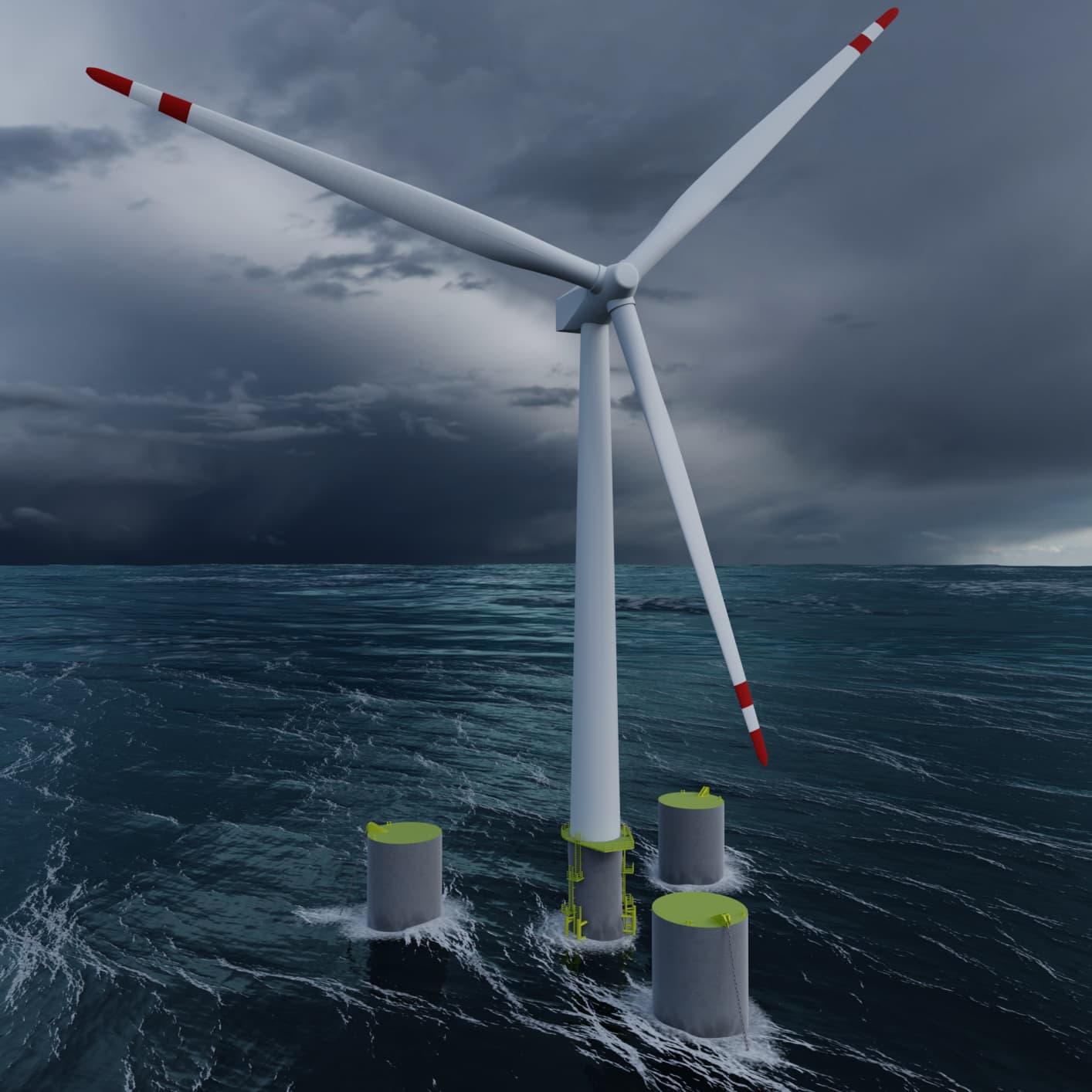
An illustration of how the turbine could look.
Iberdrola
Spanish utility Iberdrola is heading a consortium aiming to develop a large-scale floating offshore wind turbine in the North Sea, as the sector looks to drive up the size of technology and push down costs.
In an announcement Monday, the firm said the turbine would be in excess of 10 megawatts (MW) and tested at the Marine Energy Test Centre in Norway. The average size of offshore turbines installed in 2019 was 7.8 MW, according to trade body WindEurope.
The international consortium, made up of firms from Spain, Germany, France, Norway and Denmark, aims to reduce the cost of floating offshore wind energy production. Iberdrola said it hoped to lower the levelized cost of energy (LCOE) for floating offshore wind to between 40 and 60 ($44 and $66) euros per megawatt hour (MWh).
There is definite scope for cost reductions in the offshore sector. Last November, Wood Mackenzie said Europe’s LCOE for bottom-fixed offshore wind would drop from an average of $133 per MWh in 2019 to $51 per MWh in 2028.
The project is connected to the European Commission’s Horizon 2020 research and innovation program, which is providing almost 80 billion euros of funding to projects between 2014 and 2020. Iberdrola said it hoped to sign an agreement amounting to around 25 million euros with the European Commission in the second half of this year.
Construction of the project’s floating platform could begin in the second quarter of 2021, with installation commencing in the first quarter of 2022. Another floating offshore wind project is being planned for Spain, although this will use different technology to that deployed in Norway.
“There is tremendous potential globally for floating technology, as it will open up new markets where water conditions restrict the development of traditional offshore projects,” Jonathan Cole, global managing director for offshore wind at Iberdrola, said in a statement.
A leader in offshore wind, Europe is already home to the world’s first floating offshore wind farm, Hywind Scotland. A 30 MW pilot scheme of five turbines in waters off the coast of Peterhead, it started to send electricity to Scotland’s grid in 2017.
As technology develops, the size of wind turbines is increasing. In December 2019, Dutch utility Eneco started to purchase power produced by the prototype of GE Renewable Energy’s Haliade-X 12 MW wind turbine, which has a capacity of 12 MW, a height of 260 meters and a blade length of 107 meters.
Coronavirus concerns
Overall, wind power enjoyed a strong year in 2019, but the coronavirus pandemic is casting a shadow over the sector that could impact growth in the years ahead.
More than 60 gigawatts (GW) of wind energy capacity was installed last year, a 19% increase compared to 2018, according to a recent report from the Global Wind Energy Council (GWEC).
Published last week, the report found that 60.4 GW of capacity was installed in 2019, the second biggest year for additions. Some 6.1 GW of this was in the offshore wind sector, making 2019 its best year to date. Total capacity for onshore and offshore wind now stands at more than 651 GW.
The GWEC said its forecast of continued growth across the next five years – more than 355 GW of additions – would “undoubtedly be impacted by the ongoing COVID-19 pandemic, due to disruptions to global supply chains and project execution in 2020.”
It was, however, “too soon to predict the extent” of the coronavirus’ impact on both energy markets and the wider global economy, the GWEC added.
Original source: CNBC